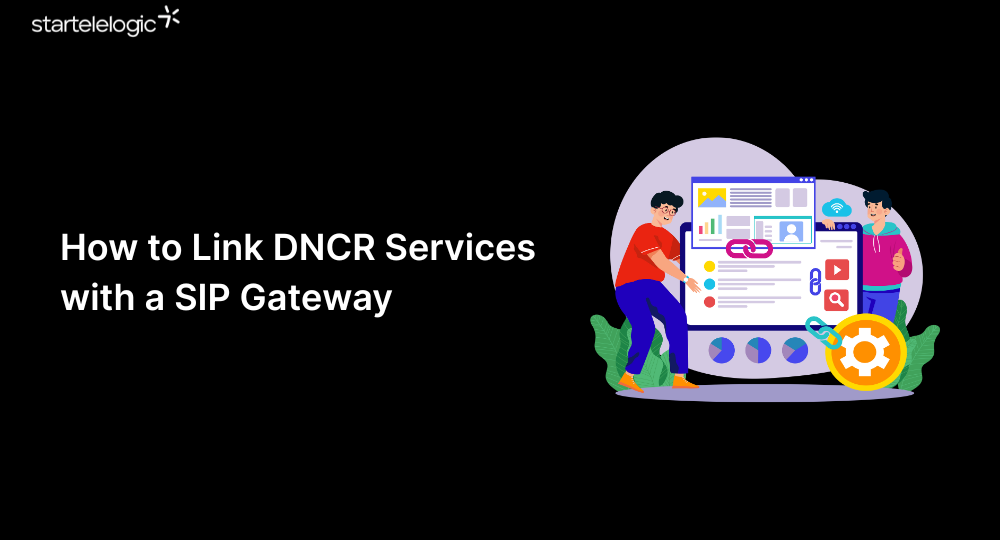If you run outbound call campaigns—whether for marketing, customer service, or sales—you’ve likely heard of the Do Not Call Register (DNCR) and the importance of staying compliant. Chances are, you’ve also invested in VoIP or SIP-based phone systems to improve scalability and reduce costs.
But here’s the challenge: managing compliance and technical infrastructure simultaneously can feel like juggling sharp objects.
That’s where DNCR SIP Gateway Integration comes in. When done properly, it helps you avoid fines, eliminates wasted calls, and strengthens customer trust—without slowing down your operations.
In this article, we’ll explore what DNCR integration involves, why it’s critical, and how you can implement it in a way that actually drives business performance.
What is DNCR Integration in VoIP Systems?
DNCR integration in VoIP systems refers to linking your outbound calling infrastructure with official Do Not Call registries—whether national, state-level, or private—so your platform can verify numbers before dialing them.
When properly configured, SIP gateway integration performs this check quietly in the background while remaining highly effective.
A complete DNCR lookup integration for SIP systems should include:
- Pre-dial DNCR verification for every outbound call
- Automatic blocking of calls to numbers listed on DNC registries
- Transparent handling that doesn’t disrupt agents
- Logged call attempts and status tagging for compliance review
In SIP-based environments, this approach typically requires:
- Real-time number validation during the SIP INVITE stage
- HTTP-based API interactions with DNCR services
- SIP signaling that returns rejection codes for restricted numbers
- Robust logging to capture decisions and lookup outcomes
Industries like telemarketing, collections, and outbound B2C operations benefit most from this type of automation due to their high call volumes.
Why Does DNCR SIP Gateway Integration Matter?
If your SIP infrastructure doesn’t include DNCR checks, you risk exposing your business to significant legal and operational consequences.
Common outcomes of non-compliance include:
- Regulatory fines that can reach hundreds of thousands of dollars
- Carrier-level call blocks or service disruptions
- Long-term reputational damage and lower answer rates
Integrating DNCR lookups into your SIP infrastructure offers key benefits:
- It blocks disallowed calls before agents even see the number
- It embeds compliance directly into your call routing system
- It protects all call types—manual, predictive, or API-based—without extra effort
Manual processes like list scrubbing or relying on agents to screen numbers often result in errors. These methods fail to scale and fall short in multi-tenant or high-volume environments.
When you embed DNCR logic inside your SIP gateway, every outbound call—regardless of origin—passes through the same standardized compliance check.
How to Connect a SIP Gateway to DNCR Services
To integrate your SIP gateway with DNCR services effectively, follow a structured approach that accounts for routing, latency, and data accuracy.
1. Choose a DNCR API Built for VoIP Workflows
Select a provider that offers:
- RESTful APIs designed for synchronous queries
- Sub-200ms response times to support real-time validation
- Coverage for national, state, and internal suppression lists
- Authentication via token or key, with IP allowlisting
- JSON responses with clear, actionable indicators
While some vendors support batch lookups, prioritize real-time access for any SIP-level integration.
2. Intercept SIP INVITE Requests Before Call Setup
Configure your SIP gateway to intercept outbound calls and trigger a DNCR lookup before the call connects. The system should:
- Parse the dialed number from the SIP INVITE
- Make an HTTP request to the DNCR API
- Wait for the lookup result
- Route or reject the call based on that result
You can implement this behavior in the following platforms:
- FreeSWITCH: Use
mod_luaormod_perlscripts to intercept calls - OpenSIPS: Use
http_async_query()for non-blocking HTTP checks - Asterisk: Use AGI or FastAGI scripts inside your dialplan
Your routing logic should apply clear rules:
- Reject registered numbers with a SIP 603 (Decline) or 403 (Forbidden)
- Forward clean numbers to their destination
3. Handle the DNCR API Response in Real Time
The API typically returns a binary result (allowed or blocked) along with metadata like the source registry.
Ensure your system can:
- Accept and act on positive/negative match results
- Handle timeout or service interruption scenarios gracefully
- Process error responses (invalid numbers, quota issues, etc.)
Use SIP response codes to immediately block disallowed numbers. You can also tag calls internally using custom SIP headers.
4. Optimize for Scale and Reliability
In large-scale environments, implement the following optimizations:
- Cache lookup results for a few minutes to avoid redundant queries
- Retry failed lookups using exponential backoff
- Use SIP headers or internal flags to skip checks for trusted numbers
Limit caching duration to remain compliant with DNCR freshness requirements—typically 30 days or less.
5. Record Every Blocked Attempt and Lookup
Capture all lookup activity for compliance and auditing:
- Log the number, result, timestamp, and decision
- Identify the registry that flagged the number
- Store logs in a central system accessible by compliance teams
Follow your internal data governance policies when setting retention periods—most organizations retain these logs for 12–36 months.
Real-Time DNCR Checks vs. Batch List Scrubbing
Batch-based cleansing—where you verify large lists against DNCR data ahead of time—still has a place in many call workflows. However, it doesn’t support fast-moving or API-triggered systems.
Batch scrubbing has several weaknesses:
- List freshness decays rapidly—often in hours
- Manual processes create errors and friction
- It lacks support for dynamic dialing or CRM-driven campaigns
Real-time DNCR integration outperforms batch methods by:
- Validating numbers instantly as calls are made
- Enforcing compliance across all touchpoints
- Eliminating human error or oversight from the process
For the most secure approach, use batch scrubbing as a secondary filter and rely on runtime validation as your primary safeguard.
Best Practices for VoIP-Based DNCR Integration
To ensure your solution is robust and legally sound:
- Use HTTPS and strong TLS for all DNCR API traffic
- Apply token-based or certificate-based authentication
- Combine national, state, and internal suppression data sources
- Define failover behavior in case the API becomes unreachable
- Reconcile SIP logs and DNCR logs regularly during audits
- Track latency and rejection rates to detect system anomalies
Who Benefits from DNCR SIP Gateway Integration?
The following groups stand to benefit most from this approach:
- Enterprises running high-volume outbound call campaigns
- VoIP providers offering hosted dialers or SIP trunking services
- Organizations in regulated industries (e.g., finance, healthcare)
- SaaS platforms with embedded voice features (e.g., CRMs)
- Startups launching outbound capabilities in compliance-heavy markets
Even small teams using cloud-based SIP services can improve compliance by integrating DNCR logic directly into their dialling stack.
Conclusion
Leaving DNCR compliance to chance or agent discretion isn’t sustainable. The only scalable, reliable, and legally sound approach is to embed real-time validation directly into the SIP routing layer.
With proper planning, fast APIs, and robust logging, you can achieve airtight compliance without compromising call performance or agent experience.
DNCR SIP Gateway Integration isn’t a feature. It’s a requirement for modern outbound systems.
If your VoIP infrastructure doesn’t support DNCR lookups yet, now is the time to build it—before your next campaign goes live.




